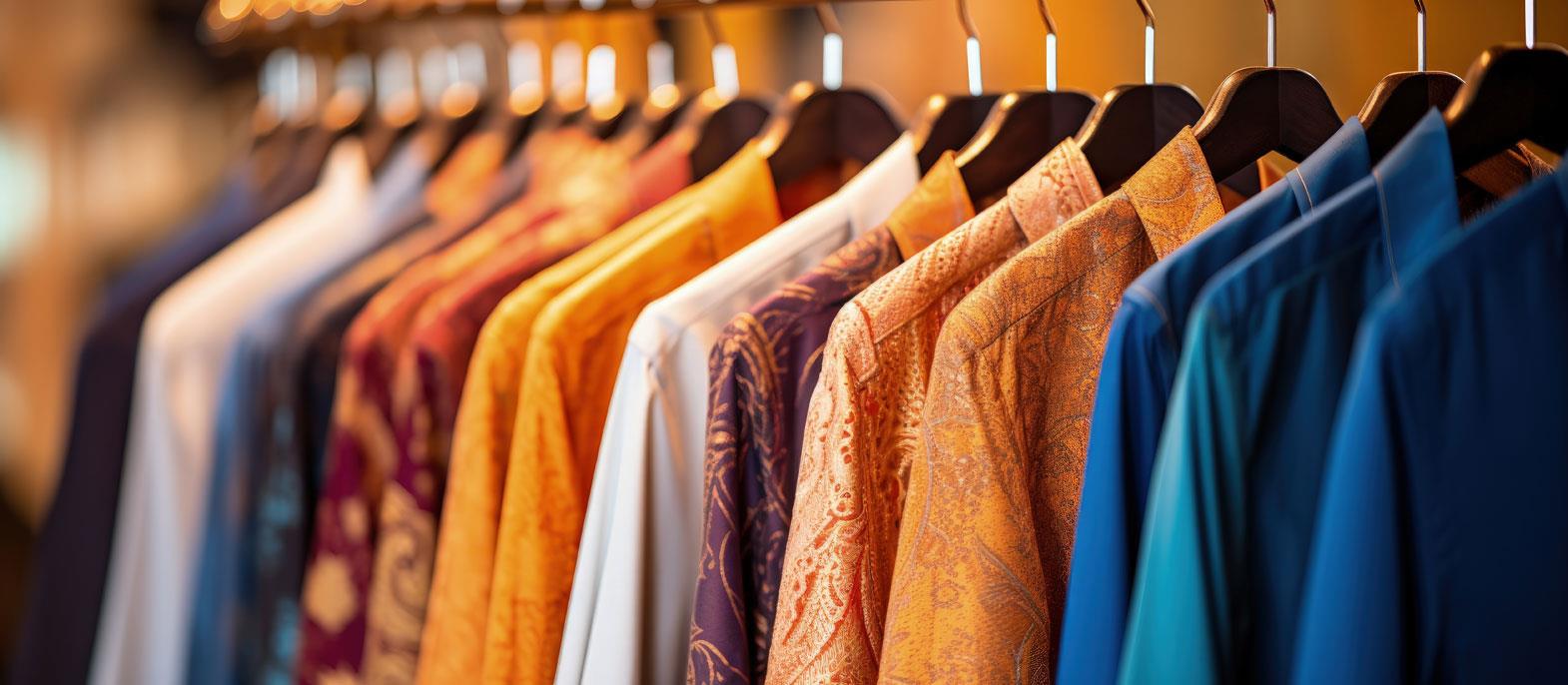This sari is a masterpiece and a classic illustration of modern ethnic design inspired from the bygone eras. Likewise, the creative fashion designers of the 21st century are in a lookout for ethnic designs that are adjacent to our cultural roots and recall our glorious past.
Every Indian region's ethnic wear comes in vibrant colors, patterns, and designs. Attire like Sari or the salwar-kameez allows to experiment with colors, design, motifs and it is not only restricted to women's wear; men's wear including the kurta-pajama or sherwani are designed in artistic form. Every variety of attire is a huge market for ethnic wear.
The entry of brands infused a fresh approach into ethnic wear and there is a lot of liveliness in this segment. It can be said that the new "in-thing" in the fashion area is ethnic wear. Brands like Satya Paul, Ritu Kumar, W Women's Wear, etc., have been successful in making their mark in Ethnic wear. Apart from these booming names, there are huge numbers of debut brands entering the Indian ethnic wear industry. Ethnic wear occupies a major part in the wardrobe for Indian festive spirits, and our Tradition is never out of fashion.
E-commerce revolution is also changing the game. Consumers are able to purchase popular and branded ethnic wear from the comfort of their home. The growth story has further trickled down to the tier II and tier III cities. The population in smaller cities and towns now has the option of purchasing online instead of getting them tailored from local shops. The sales of Indian ethnic garments have shot up more than 70 per cent. More and more designers of ethnic garments are tapping into this thriving market, especially in the metro cities. According to a company statement, Amazon India is offering over 12,000 styles in a variety of garments, like saris and kurtas from more than 90 brands. The e-commerce giant Flipkart has diversified and initiated 'Flipkart Kaarigar ke Dwar' last year, an online store dedicated to Banarasi saris. This is an effort to educate local Varanasi weavers about online shopping jargon and having e-market space to boost and expand the Banarasi sari sales.
While silk sari retailers from the south are going the extra mile to please their tech-savvy customers by organizing Skype conference calls and taking the shopping experience of heavy Kanjeevaram wedding sari to the next level. They are ramping up their websites, offering an extensive range of saris and they also email high-resolution pictures of Kanjeevaram saris as per customer's need. Sari ranks fourth among the top sold products online. There is no doubt that India is a mine for saris, and different states offer special and unique saris to the audience.
Kurtis ranks fifth amongst the top traded products in the category. Online portals offer huge variety of kurtis for every Indian festivals and occasions. Indian ethnic wear for men, women and kids enjoys limelight for celebration and during this season online portals sales often tends to move up by 20 to 30 per cent.
Major chunk of demand for online shopping comes from Indian youth and the internet usage is rapidly increasing day by day. Younger generation usually prefers to dress up casually but for festive season they particularly dress up in trendy ethnic wear keeping up our traditional and cultural background.
Ethnic wear has not only captured the Indian market, but has also made its presence internationally. It is roughly said that 15-20 million NRIs and 40-100 million Indian on a global front are interested in dressing in Indian garments. Indian ethnic style is the popular trend in the United States and especially among the Hollywood celebrities. Indian TV serials and Bollywood help in branding and creating ethnic market overseas.
E-commerce enables Indian wear to create a niche market globally. Online Shopping Portals have helped the small and medium garments enterprises of India to go truly global. Indian fashion designers also contribute largely in taking our traditional wear global market. Manish Malhotra a popular Bollywood fashion designer is famous for high end dresses for both men and women in countries like Canada, USA, Dubai and Saudi Arabia.
Chikankari art from Lucknow is delicate and intricate embroidery and has demand from the countries like Europe, Canada, Middle East and African countries. Indian Chikankari stands ahead in terms of exquisite designs and patterns in international fairs and exhibition. Chikan work is not confined to Indian traditional Indian wear; it is available in huge collections of western outfits like top, pants and skirts. About 2500 entrepreneurs are engaged in manufacturing hand embroidery chikan garments and fabrics for sale in local, national and international markets.
Yet another Indian ethnic wear- kurtis has shown positive progress throughout the globe. Owners, exporters specialized in high fashion garments like Kurtis, tunics and kaftans claim to have grown more in their sales by 15 per cent due to overseas demand. In view of this positive shift in global demand for Indian wear, the Clothing Manufacturers' Association of India (CMAI) has projected the Indian apparel market to grow 13-15 per cent annually by 2020.
References:
1). indiaretailing.com
2). indianonlineseller.com
3). timesofindia.com
4). gadgets.ndtv.com
5). franchiseindia.com
6). businesstoday.in
7). indiaafricaconnect.in
8). chikankaari.com








Comments